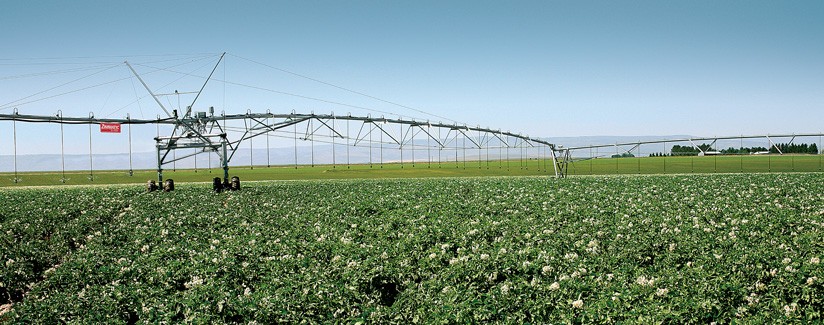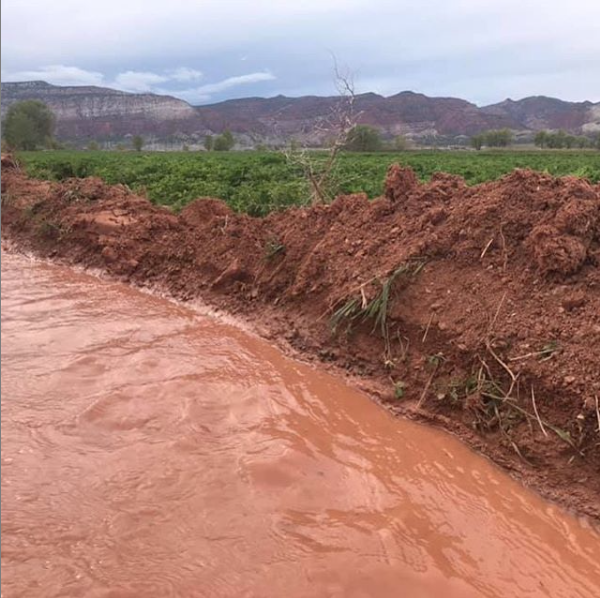Blog Zimmatic
Is Your Water Damaging Your Pivots?
21 août 2019

There isn’t a lot of research about the effects of water quality on irrigation equipment, but Matt Yost and his team at Utah State University aims to change that.
“Water quality can differ so much between farms, and even within a growing season on the same field. That’s probably why there’s not a lot of research on this topic,” said Yost, a USU Extension specialist. “We just embarked on a study to test how new irrigation equipment – nozzles, regulators and sprinkler bodies – improves irrigation efficiency on 12 center pivots. Although not a direct test of how water quality impacts irrigation wear, we will examine how water use and quality may have affected wear and tear on the machines.”
In Utah, for example, growers often irrigate with ground and surface water that’s very hard (calcium sulfate and calcium carbonate), which leaves chemical deposits/scale on the inside and outside of irrigation pipes and equipment. Over time, the scale begins to flake off and plug sprinklers.
“At some point, you can no longer screen out the scale flakes. That’s one of the reasons that some farmers we work with have had to replace their pivots,” said Niel Allen, an irrigation specialist at Utah State University. “I’ve even seen significant scale deposits on PVC buried mainline. It can also be a problem in drip systems.”
Allen said fine sands in irrigation water can also cause significant wear on pumps and sprinklers – especially brass impeller and nozzles.
“Silts and sands can deposit in pipes, especially near the end of sprinkler lines, pivots or drip tapes,” he said. “The low velocity associated with low flows drop the sediments in the pipe. The extra weight of sands and silts can cause structural problems in pivot overhangs, the last span and, occasionally, in the end pipe of wheel lines. It can make pipe harder to move, because the mud that doesn’t drain out is heavier than water.”

“We recommend that growers periodically test their water quality – especially when first designing and installing a new or replacement system. This is the best way to find out if there are potential issues,” Yost said. “It’s also important to make sure the system has proper water filtration and/or screening.”
Yost added that poly-lined pipes are also an option and, in cases where it’s economically feasible, growers might want to consider chemically treating their water.
“Unfortunately, once hard or dirty water enters the irrigation system, your options become more limited,” he said.
Examining the effects of dirty water is just one area of research for Yost and his team. With a grant from the Foundation for Food and Agriculture (Yost received the New Innovator Award) and other organizations, they are establishing three long-term demonstration sites to study agriculture water optimization. At these sites, more than 150 different combinations of pivot irrigation technology, irrigation rates, crop genetics, tillage and crop management practices will be evaluated in order to identify winning combination that will help growers make the most of every drop of water.
“This project is important because identifying individual practices or combination of practices that produce the greatest water savings is of high importance to irrigators in Utah,” he said. “If certain technologies and practices prove to be economical, effective and feasible, applied water in agriculture could be reduced by nearly 20 percent – resulting in annual savings of nearly 20 billion gallons of water in Utah.”
For more information about USU Extension projects, visit http://extension.usu.edu. Information can also be found on social media - @Utahcrops and @USUcrops.